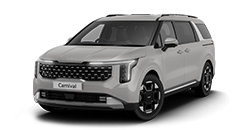open menu
- Home>
- discover kia>
- ASK>
- What does all-wheel drive mean?
What does all-wheel drive mean?
All-Wheel Drive (AWD) is a system where the engine sends power to all four wheels all the time, having advantages in traction and cold weather.

All-wheel drive (AWD) refers to a system in which a car's engine sends power to move all four wheels. AWD, as its name indicates, sends power to each wheel to help keep your vehicle driving better than a vehicle with front-wheel drive or rear-wheel drive on slippery, ice-covered roads.
In reality, there are two types of AWD systems. One system, called “full-time AWD”, is where a car powers all four wheels at the same time. The second system has the capability of delivering power to all of the tires but only does so when it is required. Most of the time, it runs on two-wheel drive mode. That is the reason why the latter system is called “part-time AWD.”
Both full-time and part-time AWD systems usually operate without direction from the driver. All four wheels, instead of two, receive torque through a set of axles and spin at different speeds simultaneously. AWD vehicles are loved particularly by people who live in areas where the weather tends to be snowy and rainy. Since an AWD system offers additional traction on slippery roads, it is safer and makes drivers more confident in handling. Acceleration can also be easier as traction is equally transmitted among all four tires, with less slippage. Because your car can drive stably, you rarely feel nervous due to a sudden slip. In addition, its excellent traction control makes it popular in high-performance vehicles.

AWD and 4WD (four-wheel drive) are often used interchangeably in the automotive world, but these two terms represent two distinct drivetrains. 4WD is usually fit for off-road driving conditions as it offers the versatility to traverse on any kind of terrain. AWD, on the other hand, works well in a variety of driving situations, with the exception of off-roading conditions. To have a better understanding of the differences between AWD and 4WD, we've described how each can benefit you, their individual downsides, and little-known facts about both.
AWD vs. 4WD In Various Driving Conditions
As AWD and 4WD send power to all four corners, both drivetrains have the upper hand in snowy or rainy situations, especially when you are prone to losing traction. Thus, investing in either of these systems is worth your money if you live in areas where the road is frequently covered with ice or is slippery from rain. However, in colder weather conditions, such as in regions packed with snow all the time, the AWD system has a higher advantage than the other. These days, most AWD systems allow the driver to opt for a "snow" or "low traction" mode depending on the road situation, but even its automatic system can take swifter action than you if required. If you are an off-road enthusiast, 4WD might be a better option. 4WD is supreme when placed under off-road conditions, such as traveling across deep water or climbing steep hills.
Pros And Cons Of AWD And 4WD
The biggest advantage of an AWD system is that you don't have to manually switch modes. In AWD systems, all four wheels are rotating full time, and when there is a sudden loss of traction, it immediately transmits power where it is required. AWD is applied on a wide range of vehicles, from small sedans to all sizes of SUVs, providing you with a plethora of options. AWD operates smoothly in various situations, from dry to rainy to snowy conditions, but it's considered less effective in mountainous, harsh terrains. On the contrary, 4WD is optimal for unpaved roads including gravel tracks, sandy roads, and even boulder-strewn trails. Many 4WD systems nowadays are automatic, so the vehicles can switch between 2WD and 4WD on their own when necessary. Overall, if you are usually driving in inclement weather, either AWD or 4WD can be a good choice. But, both drivetrains are less fuel efficient, as they typically add extra weight to a vehicle, thus decreasing fuel economy and leading to a higher fuel cost.
Less Known Facts About AWD And 4WD
Most people know that AWD is useful in snow and ice, but it is less known that AWD can also help on dry roads or when undergoing weather conditions listed above. AWD can assist you in faster acceleration with all four wheels offering power and traction, making some sports cars gravitate towards AWD. The Kia Stinger GTS, for example, adopted a dynamic AWD system that includes a drift mode, attracting drivers who enjoy 'fun driving'. While the model incorporates the AWD system from the usual Stinger, it differs by sending certain amounts of power to the rear wheels when its Sport mode is activated. Meanwhile, the electronic AWD system has increasingly been applied to luxury car brands to maintain stable driving performance and to improve fuel efficiency. This system transmits most of its power to the rear wheels during normal driving conditions, such as on a dry road. But, when faced with an icy road, the vehicle automatically distributes torque to the front and rear to maintain stability. Thanks to the electronic AWD, more drivers can now enjoy the nimble handling of RWD and the safety of AWD at the same time.





